22 December 2010
The Strangest Telescope On Earth is Complete!
Posted by Dan Satterfield
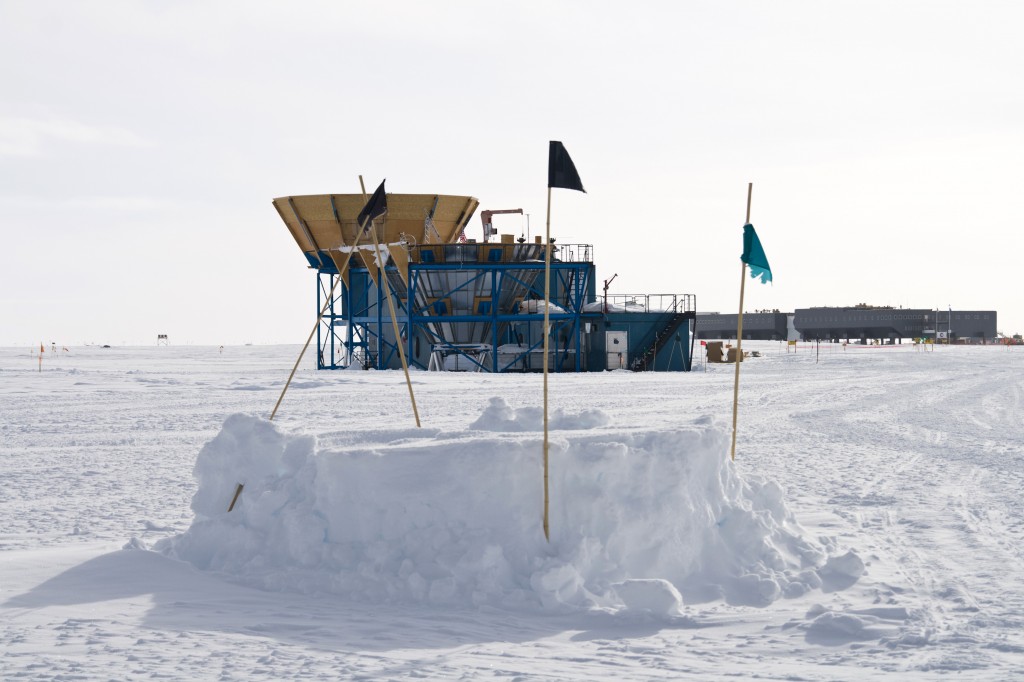
One of the deep holes at the South Pole that make up Ice Cube. Amundsen-Scott Station is in the background. Dan's pic Jan. 2010
It’s called ICE CUBE and it’s at the bottom of the World. Actually it’s IN the bottom of the World, and without doubt it’s the strangest telescope on Earth.
Ice Cube is a neutrino observatory. It’s made up of hundreds of detectors embedded in the ice 1 km beneath the South Pole. My name is on one of those detectors, and it something I am very proud of!
The NSF announced this week that the final detectors have been installed and Ice Cube is officially complete. I visited last January as they were well underway.
Neutrinos are the smallest thing you cannot imagine. They are the tiniest wisp of nothing we humans can contemplate. They are so small that billions are passing through your eyeball right now.
Not to worry, they will likely hit nothing. Most neutrinos pass through the entire Earth and hit nothing. They could pass through a light year thick slab of Lead and still most would not hit anything!
Do you begin to understand what I mean when I say small?
Neutrinos have no charge like electrons and protons, and they do not interact with matter. The only time we can observe one is when one just happens to crash into the nucleus of an atom.
When that happens in ice, a particle called a muon is ejected at nearly the speed of light. The speed of light is slower in ice than in a vacuum, and if a particle is going faster than the light speed in ice, it produces a flash of blue light called Cherenkov radiation. (Yes, nothing can go faster than the speed of light in a vacuum, but particles can go faster than the speed of light in ice!)
By tracking the direction of the flashes of Cherenkov light researchers can calculate backwards where the neutrino came from. They can also measure the intensity.
So where are you going to find a 1km thick cube of clear pristine ice with the facilities to house scientists and do research? The answer is easy, Amundsen Scott Station at the South Pole.
Using very hot water, produced from melted ice, the ice cube folks have drilled a bunch of deep holes in the ice. Then they lowered a string with special detectors on them into the ice. The detectors freeze into the ice and can detect flashes of light when a neutrino hits an atom. There are 80 holes with a string of 60 detectors called DOMS in each hole.
That’s around 4800 detectors! When I was at the Pole, I got to sign one. That detector with my name on it is now in the ice and part of Ice Cube.
Oh the things that make a science geek smile!
Why are neutrinos so important? To answer that properly requires an expert to write a good book. Fortunately someone did and the book is a really interesting read.
Frank Close of Oxford wrote NEUTRINO. You might think a book about a particle would be boring. It’s not! Frank Close tells an intriguing story of how science finally spotted one!
Neutrinos are made in stars, and they were made in the big bang when the universe was a fraction of a second old. They are kind of like an astronomical X-ray. They allow astronomers to see into stars and through the gas and dust of the universe.
Below is a video clip I shot that gives a feel of the place.
Neutrinos are the subject of intense research right now and Ice Cube may very well make some amazing discoveries that begin to answer some of the most weighty questions in science. Think about it. 96% of the universe is made up of dark matter and dark energy.
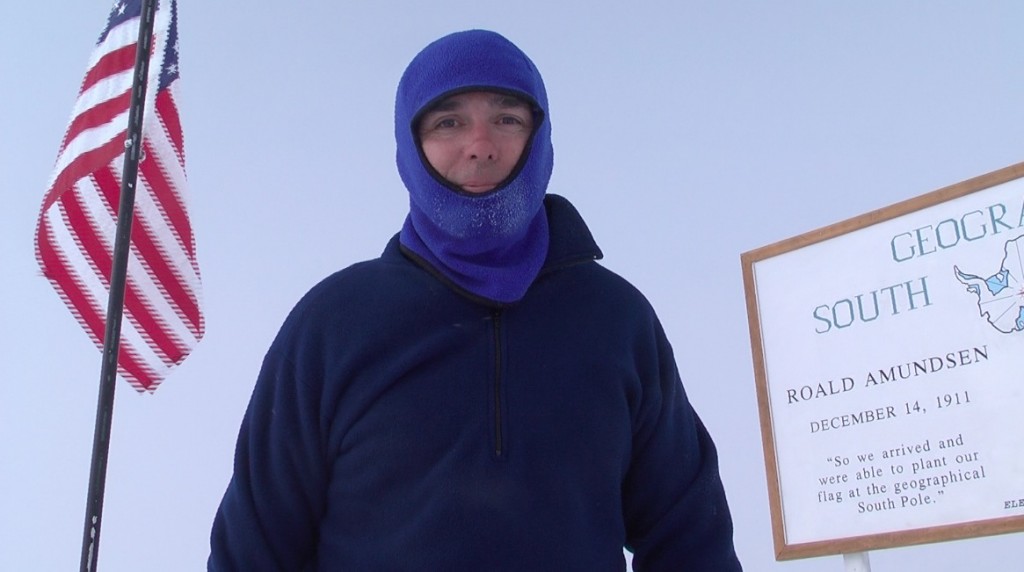
The exact bottom of the planet is about a 5 min. walk from Ice Cube. It was -22F by the way and I had my coat off just long enough to take that pic.
It’s called dark because we cannot see it and have no idea what it is! Only 4% of the universe is visible to us. Neutrinos may very well help scientists to figure out what dark energy and dark matter really are. It’s a really big deal and you will understand how big, if you read the book.
You will also know more about neutrinos than 99.9% of the people on Earth!
You can find out more about Ice Cube here.


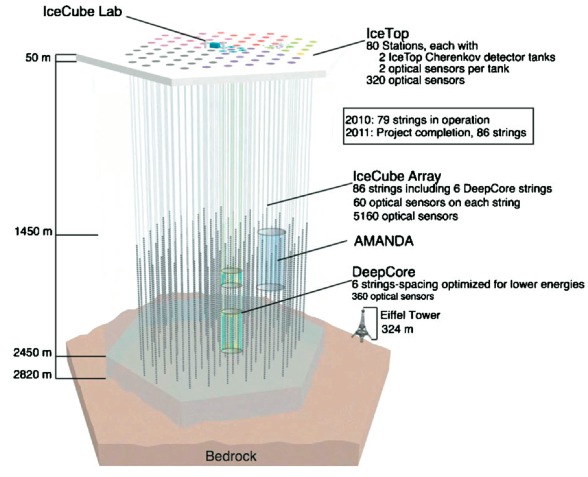
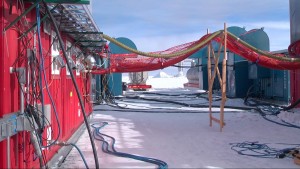

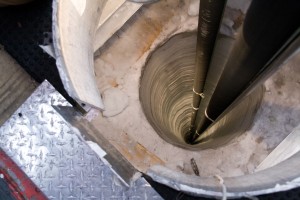
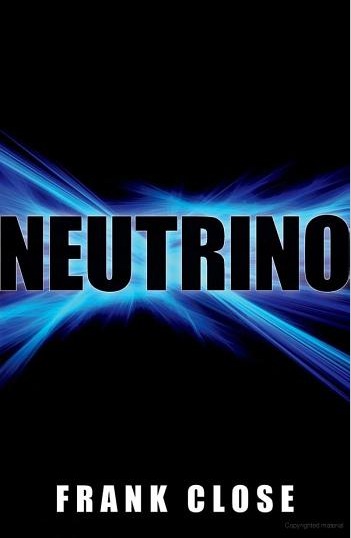
 Dan Satterfield has worked as an on air meteorologist for 32 years in Oklahoma, Florida and Alabama. Forecasting weather is Dan's job, but all of Earth Science is his passion. This journal is where Dan writes about things he has too little time for on air. Dan blogs about peer-reviewed Earth science for Junior High level audiences and up.
Dan Satterfield has worked as an on air meteorologist for 32 years in Oklahoma, Florida and Alabama. Forecasting weather is Dan's job, but all of Earth Science is his passion. This journal is where Dan writes about things he has too little time for on air. Dan blogs about peer-reviewed Earth science for Junior High level audiences and up.
Looks like a really cool place to chill!
http://www.anon-web.edu.tc
Very nice. The whole project seems great.
[…] its IN the bottom of the World, and without doubt its the strangest telescope on Earth.Source:https://blogs.agu.org/wildwildscience/2010/12/22/the-strangest-telescope-on-earth-is-complete/ ( Leave a comment […]
Imagine if every week 25 million people were watching a TV show about teams of scientists looking for neutrinos, suggesting new ideas and cheering on everyone’s progress…
I’d like to live on that planet!
Could say like some of the kids say .. I’m chilling … or Chill out …
Be very interesting project .. wonder if any one out there is using neutrinoes to communicate….
Hope we can find out a lot about neutrinos …..I am wondering if the neutrinos are destroyed when smashed into a nucleus or do they just become oldtrinos.
Amazing example of how the smallest doors lead to the largest places.
[…] its IN the bottom of the World, and without doubt its the strangest telescope on Earth.Source:https://blogs.agu.org/wildwildscience/2010/12/22/the-strangest-telescope-on-earth-is-complete/ Posted by anacrismerino at […]
I have the sneaking suspicion that you guys will find out that neutrinos are dark matter, massed en force, they are what keep regular matter (galaxies and clusters) from flying apart. You wanted to know what it was, there it is. Even though they have no charge, they still have mass, and mass, no matter how small still exerts a pull. Ok, I said my peace.
That’s been checked and there seems to be not enough mass from neutrinos to account for it.
I liked the article and found it all very interesting until I got to the end where it read, “Only 4% of the universe is visible to us. ”
I don’t understand how that is accurate. If the universe is, “The universe is commonly defined as the totality of everything that exists,[1] including all physical matter and energy, the planets, stars, galaxies, and the contents of intergalactic space.”
How can you quantify what percentage we are able to see?
It might be better to have phrased it as only 4% of the mass of the universe is visible to us. To put it another way- The things we can see and detect. Protons and neutrons etc. are only 4% of the mass of the universe. The rest is made of a dark matter and energy that is currently unknown.
Think about this. These neutrinos are whizzing right through you at this very moment.
[…] The Strangest Telescope On Earth is Complete! At the bottom of the world is a telescope called ICE. It is actually built into the world. ICE’s objective is not to observe stars or planets, but to observe neutrinos. Neutrinos have no charge like electrons and protons, and they do not interact with matter. The only time we can observe one is when one just happens to crash into the nucleus of an atom. […]
Makes one wonder, how do we get the money for this stuff? I mean, people are starving, can’t talk with a doctor for 10 minutes, we can’t get the deficit and debt down, people are selling their bodies just to get by, but we have money for this?
In the late 1800’s scientists were playing around with LINEAR ACCELERATORS that became the basis of the cathode ray tube. I am sure this useless endeavor was a huge waste of money that could have been better spent subsidizing the population growth. But the immense hubris of the scientists would not allow them to see logic so they continued to work on this useless technology which was not only a vital scientific tool but also led to the development of television. Later the industry spawned by this technology led to the development of the teleprompter, a crucial tool of our lord and saviour ‘The One…. His O-ness’
Seriously though. There are 6 billion people on this planet, not because of social spending, there are so many people because science found a way to feed house and cloth them. Science solves problems. The government doesn’t solve problems, it subsidizes them.
[…] Our next story takes us all the way down to the bottom of the earth, where scientists have built what’s being called The Strangest Telescope on Earth. […]
[…] Strangest telescope on earth is complete […]
So, djin, what’s the price of tea in china?
Glad to see some results being reported — http://www.wired.com/wiredscience/2013/11/icecube-neutrinos-detected/
I heard the NPR report last night (http://www.npr.org/2013/11/21/246408220/ghost-particles-in-antarctica-offer-glimpse-of-deep-space). I’d recently read that Frank Close book, so I was a bit confused by the NPR article saying they could distinguish neutrinos from beyond the solar system. I was glad that the Wired article did explain how they could distinguish between those and others from the sun.
Who can imagine that someone could built that telescope within that place. Good job.Just want to know if the place atmosphere can’t affect how the telescope functions.